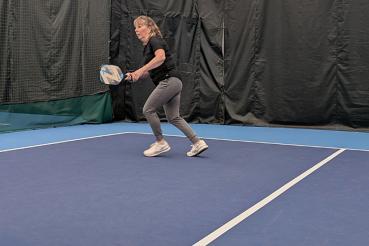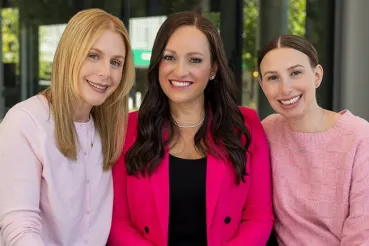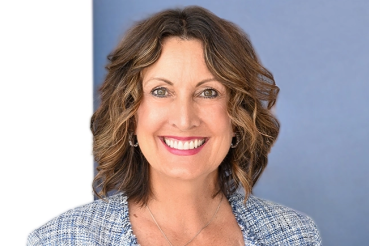Leroy “Lee” Little credits his wife — backed by a team of Rush heart specialists — with saving his life.
In 2016, Lee suffered a mild heart attack and received an implantable defibrillator. The defibrillator helped Lee’s heart keep up, without problems, until 2019, when he started having trouble breathing.
From heart problems to advanced heart failure
At that time, Lee was often short of breath, causing him to be in and out of the hospital every couple of weeks. Doctors discovered fluid on his lungs and started performing additional tests, which led to a diagnosis of heart failure. Lee was started on a heart failure medication, but when the drug started to lose its effectiveness, Lee’s provider seemed to be out of options.
That’s when Denise Little stepped in. Denise started researching Chicago’s top heart failure experts and found Rush. She took it as a good sign — she had been born at Rush University Medical Center and knew that the hospital system had an excellent reputation.
Denise’s gut told her to transfer Lee so he would have access to treatment options that his current providers didn’t offer. She asked for a transfer to Rush and was connected to cardiologists Tisha Suboc, MD, and Karolina Marinescu, MD.
Suboc and Marinescu both met with Lee and came to the same conclusion. They were impressed with how hard he was fighting to feel better but recognized that he needed to act quickly to treat his advanced heart failure.
Advanced treatment for an aging heart
Approximately 6.2 million people in the United States have heart failure according to the Centers for Disease Control and Prevention. Of this total, about 10% have advanced heart failure — meaning conventional treatments are no longer working.
People over the age of 65 are the most at risk for heart failure in part because aging weakens the heart muscle. Often, older heart patients also have a combination of genetic factors and heart disease. Lee, at age 77, had experienced symptoms for many years, which ultimately led to a poor quality of life and worsening disease.
Recognizing this progression, Suboc and Marinescu quickly assembled an advanced heart disease team to care for Lee. The team, which included cardiologists, a cardiovascular surgeon, physician assistants, nurse practitioners and nurses, agreed that a ventricular assist device (VAD) was Lee’s best treatment option.
A VAD offers improved quality of life
A VAD — a mechanical device that helps the heart pump and circulate blood through the body — offered Lee a number of benefits. It would prolong his life, improve his organ function and reduce his heart failure symptoms. Plus, Lee would feel better and have more energy after recovery so he could lead a more active life.
A VAD doesn’t replace the heart but works alongside it to help it pump blood with less work. A cardiac surgeon implants the device below the heart’s ventricle, and an attached tube routes the blood. Patients also have a cable, called a driveline, that connects from the pump through the skin (often near the abdomen) to a controller. The controller and its power source are outside of the body, and patients typically wear a small bag to disguise the equipment.
“Lee’s age and prior hospitalizations helped him to accept his treatment plan quickly,” says Marinescu. “His symptoms were not subtle, and he understood what his life would be like if he continued with his current medical therapy. He was positive and enthusiastic, knowing that he would experience a better life with a VAD.”
Team approach to heart health
Lee’s VAD team worked together to prepare him for surgery, recovery and life with his VAD implant.
“We understand that this is scary, and that patients need support from every angle,” says Marinescu. “That’s why we have such a big team and everyone plays a role. We have different focus areas, but we are all working to improve the quality of life of our patient, both before and after surgery.”
Suboc and Marinescu focused on strengthening Lee’s body for surgery and minimizing any complications he may have.
Melissa Manzuk, PA-C, helped Lee understand what life would be like with his VAD. As one of Lee’s VAD coordinators, Manzuk taught him how to care for his device and the lifestyle changes needed to live with a VAD.
In addition to her education role, Manzuk coordinated Lee’s appointments with palliative care, social work and psychology, which are standard for VAD patients. Manzuk and fellow VAD coordinator Kerry Shanklin, APRN, continue to serve as Lee’s “go to” people, helping him with any medical or social needs.
Patient trust and surgical expertise
As Lee headed into surgery, he said he had the utmost trust in his medical team.
Denise echoed this feeling. “Lee’s medical team was very transparent, and that was important to me. We were well-educated going into surgery.”
Lee was in good hands with cardiovascular surgeon Antone Tatooles, MD. Tatooles, an expert in his field and an experienced VAD surgeon, is known for his calm and confident manner during surgery.
He is also quick to give credit to the entire VAD team.
“Our Rush team is full of outstanding individuals truly dedicated to the study of the heart. Each person elevates the status of those around them,” he says. “We challenge each other to keep growing and doing better, and this means improved care for our patients.”
Lee agrees, adding, “I can’t say enough about my Rush team. I felt like Denise and I were surrounded by a family that really cared. It wasn’t just a procedure to my team — they remain committed to walking through this with us.”
‘Heart in a bag’ gives freedom and a new outlook
Post-surgery, Denise continued to be Lee’s advocate. With a background in education, she wanted to be as knowledgeable as possible about caring for Lee and his VAD. Manzuk included Denise in all training sessions to ensure that she felt confident being part of Lee’s recovery team.
Lee’s recovery was difficult at first. He spent about a month in the hospital, working to take deep breaths and manage his pain. But once he started to feel better, he was discharged to continue his recovery at home.
That recovery included going to cardiac rehabilitation at Rush Oak Park Hospital, which is part of the Rush system. Being able to do his cardiac rehab in Oak Park was convenient for Lee, since he and Denise live in the western suburb. The comprehensive cardiac rehab program helped him get stronger and gain back the weight he lost in the hospital.
Now, he “feels fine” and can manage going up and down his home’s three floors without problem. He also accompanies Denise on her shopping trips, where his job is to push the shopping cart.
He doesn’t feel restricted by his VAD, admitting that the only difficulty is carrying his VAD bag with him, which he refers to as his “heart in a bag.”
Suboc says that she is seeing Lee less and less, which is a good thing. “Lee is driving his convertible, enjoying his wife’s cooking and spending time with his family,” she says. “That’s where he wants to be, and that where he should be — not in the hospital.”




